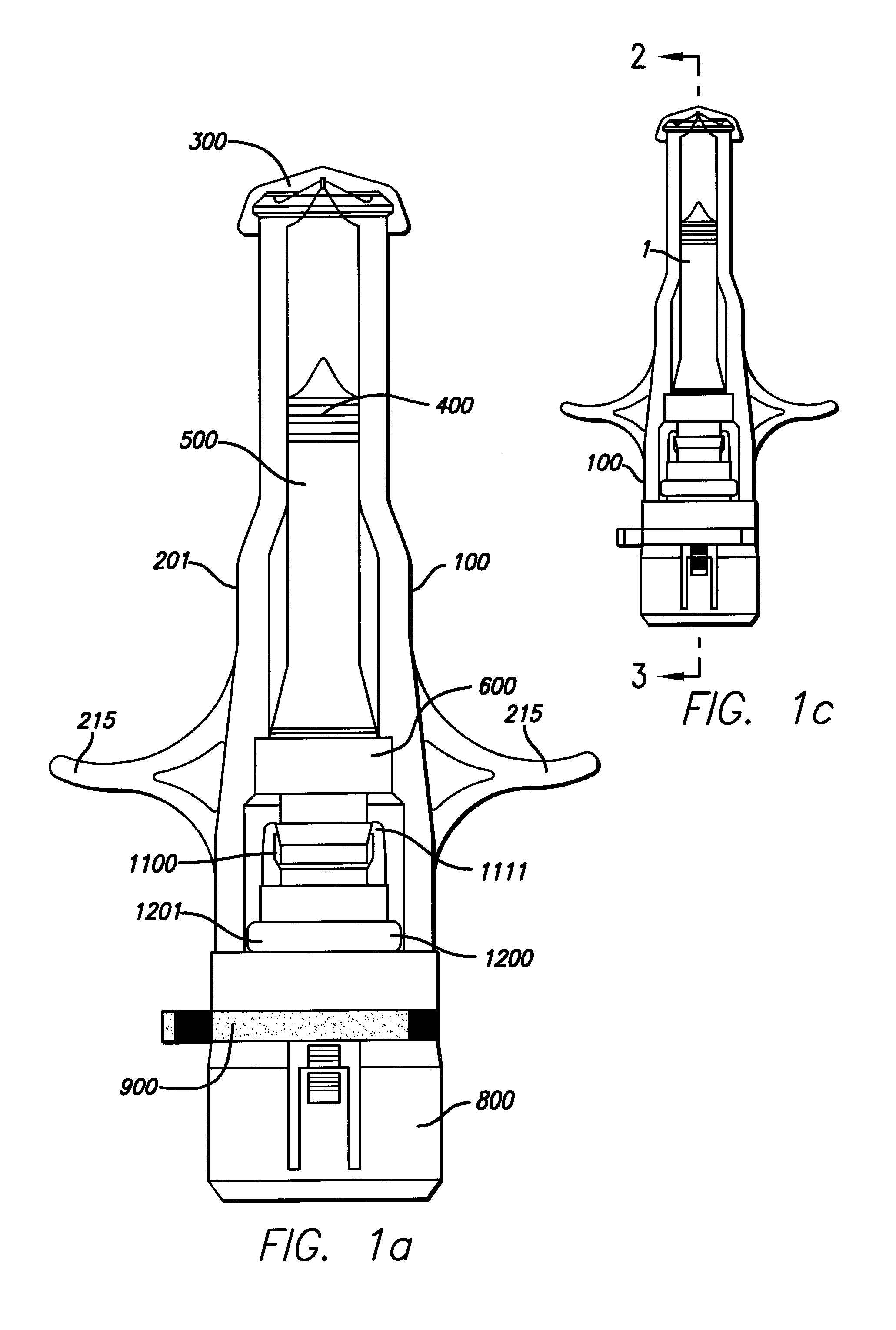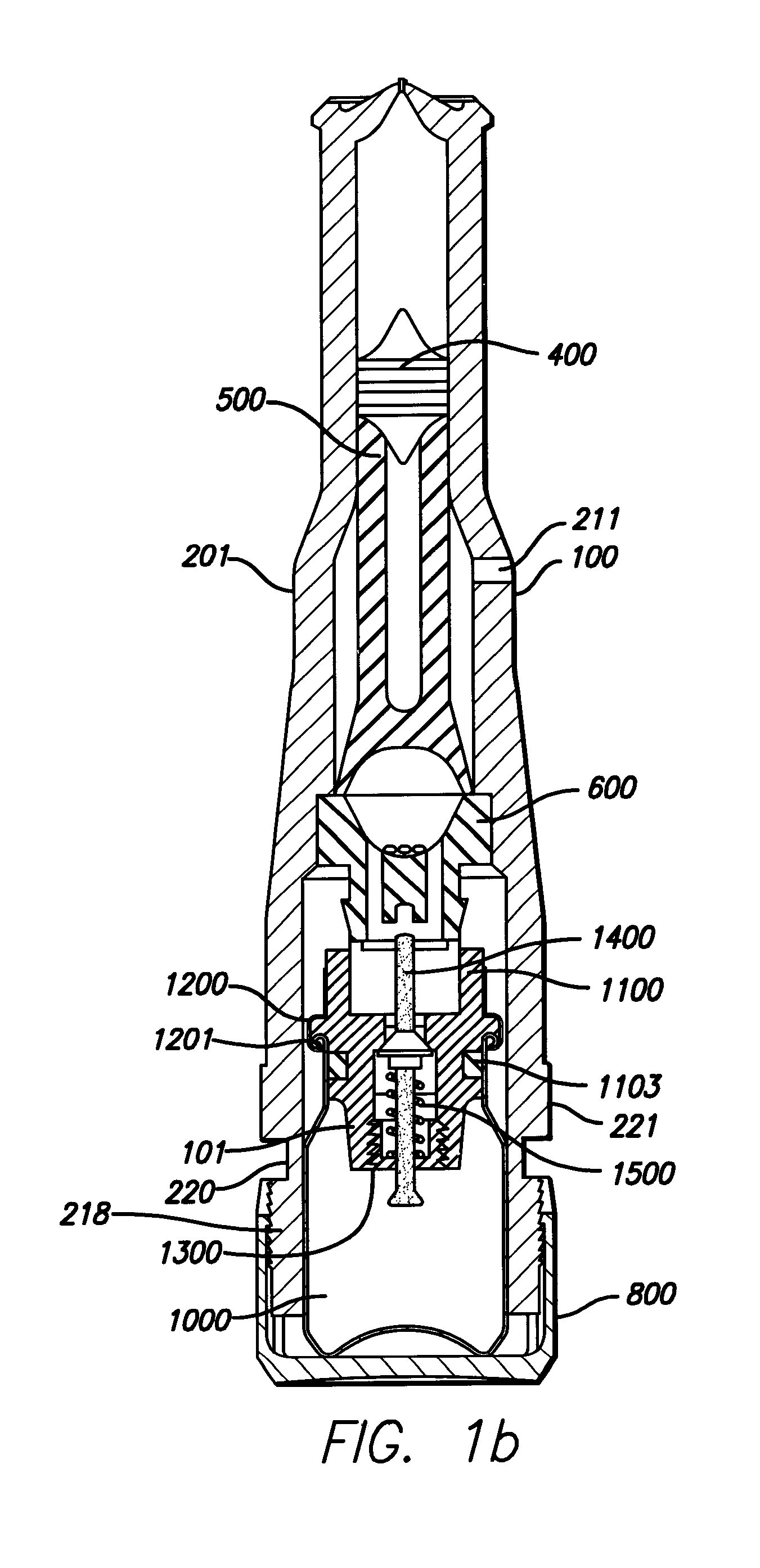Modular gas-pressured needle-less injector
a module and injector technology, applied in the field of gas-pressured needleless injectors, can solve the problems of pain for patients, high production cost of traditional needle injectors, hypodermic syringes, etc., and achieve the effect of reducing the kickback
- Summary
- Abstract
- Description
- Claims
- Application Information
AI Technical Summary
Benefits of technology
Problems solved by technology
Method used
Image
Examples
Embodiment Construction
Operation of a Needle-less Injector
Prior to use, a needle-less injector is assembled in accordance with the instant invention, all elements thereof being gamma sterilized with the exception of the engine assembly. The engine assembly is checked for quality control purposes by opening and closing the valve, and thereafter the engine housing is filled with a suitable compressed gas. The interior portion of the housing between the proximate end of the housing and the proximate end of the plunger is then filled with 0.5 ml. of liquid. The needle-less injector is then assembled and stored for a prolonged period of time.
When ready for use (see FIG. 1a), the ampoule cap is removed from the proximate end of the housing by the user. Subsequently, the user also removes the safety clamp by bending and / or distorting the clamp. The user is performing self-administration of an injection and elects to employ the following configuration: the user's index and middle fingers are placed in the arcs of...
PUM
 Login to View More
Login to View More Abstract
Description
Claims
Application Information
 Login to View More
Login to View More - R&D
- Intellectual Property
- Life Sciences
- Materials
- Tech Scout
- Unparalleled Data Quality
- Higher Quality Content
- 60% Fewer Hallucinations
Browse by: Latest US Patents, China's latest patents, Technical Efficacy Thesaurus, Application Domain, Technology Topic, Popular Technical Reports.
© 2025 PatSnap. All rights reserved.Legal|Privacy policy|Modern Slavery Act Transparency Statement|Sitemap|About US| Contact US: help@patsnap.com



